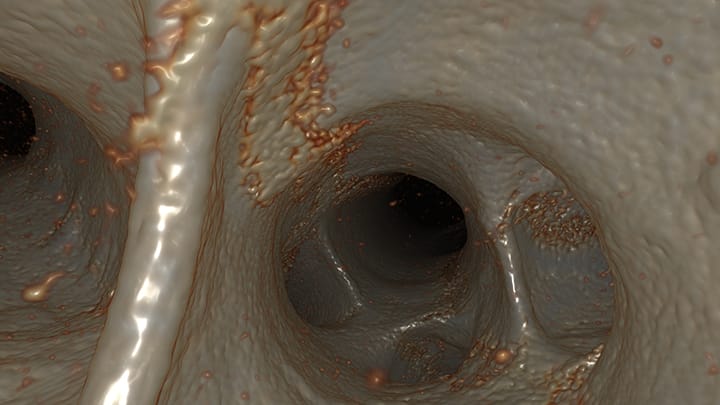Student Showcase: Clarence Wigfall

In this month’s Student Showcase, the Flame caught up with master’s of public health (MPH) and applied social psychology doctoral student Clarence Wigfall, his nationally recognized BioArt, and how he wants to use the persuasive power of advertising to inspire people to make healthy life choices.
What are you up to at CGU?
I have completed the coursework for an MPH from [the School of Community & Global Health] and am now writing up the capstone to complete that degree program.
When I complete this semester and next semester I will have completed the coursework for a PhD from [the Division of Behavioral & Organizational Sciences] in applied social psychology [from the School of Social Science, Policy & Evaluation].
What brought you here?
My focus has shifted [away] from advertising and media production that is designed to motivate many to the advantage of a few, as in the case of many products that are really unhealthy life choices for those who consume them, but profitable for those who sell them. I am much more interested in using media and persuasion to persuade many to move toward healthy life choices. Major advertisers are very sophisticated media producers. Public health persuasion must become more sophisticated to have a significant impact. I started the MPH first and had an opportunity to join the applied social psychology PhD program, which I did. The combination of those degrees touches on my primary areas of interest.
And those are?
The tailoring of persuasion messages to the individual level for all participants in a study or population. This includes combining mobile communication technology, computer mediated communication theory, and [high production] video, audio, and text persuasion messages.
Rumor has it that your work has started to make some major waves: You created a video of a lung that has been getting a lot of attention in the public-health world. Can you tell us about that?
The video was created as part of the National Heart, Lung, and Blood Institute’s Human Lung Molecular Atlas Program, under a grant to The Saban Research Institute at Children’s Hospital Los Angeles. It is a hyper-real visualization of distal lung airway from [micro-computed tomography, a three-dimensional form of X-ray imaging,] using volume rendering of data set by animation software application. This video represents a novel way to visualize a digital micro-computed tomography data set using the same type of animation software used by major motion picture filmmakers. My video is used extensively on many National Institutes of Health (NIH) and associated lung-research sites. It was recently featured on the NIH Director’s Blog.

Your video also won a major competition for BioArt (art created using biological systems and processes).
Each year the Federation for American Societies for Experimental Biology (FASEB, the organization that legislators, federal agencies, and the media turn to for information on policies related to biomedical science and engineering) picks BioArt winners that it believes will help with that mission. Through the BioArt competition, FASEB aims to share the beauty and excitement of biological research with the public.
Do you plan to work in the same field as your current research? Are you currently working in this field?
Yes, I am currently working on a variety of NIH-funded projects. These projects range from persuasion theory driven prevention to hyper-real visualizations and, most recently, the development of a complete lung visualization that can be manipulated and explored in real time by multiple researchers through an Internet interface.
I recently completed a series of four adolescent marijuana-prevention videos as part of a National Institute on Drug Abuse (NIDA) grant awarded to a CGU research team led by William Crano, PhD, director of the Health Psychology and Prevention Science Institute.
How has CGU nurtured your work?
A critical interest that I have is the convergence of communication and imaging technology and cross-domain scientific exploration made possible by the digitization and capture of data across scientific domains. My advisor, [and] other faculty and students at CGU are encouraging and supportive of my interests. I am learning to plan and shape the direction of my research using vigorous theoretical, methodological, and statistical practices. This is a great place to learn and grow intellectually and scientifically. My advisor, William Crano, is remarkably supportive and open to my interests in the convergence of communication technology, medical and biological research, and persuasion theory. My second reader is Eusebio Alvaro who has also been extremely supportive.
To view the 2014 BioArt winning video (a virtual tour of a mouse’s lung) by Clarence Wigfall, Tasha Salisbury, Harvey A. Pollack, and Rex A. Moats, click on the link below: